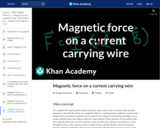
Sal derives the formula F=ILB to determine the force on a current carrying wire. Created by Sal Khan.
- Subject:
- Physical Science
- Physics
- Material Type:
- Lesson
- Provider:
- Khan Academy
- Provider Set:
- Khan Academy
- Author:
- Sal Khan
- Date Added:
- 07/31/2008

Sal derives the formula F=ILB to determine the force on a current carrying wire. Created by Sal Khan.
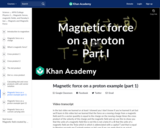
Sal does an example problem to determine the size and direction of the magnetic force on a proton moving through a magnetic field. Created by Sal Khan.
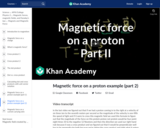
Sal determines the radius of the circle traveled by the proton in the previous example by using the formula for centripetal acceleration. Created by Sal Khan.
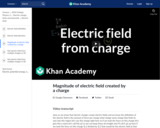
In this video David explains how to find the magnitude of the electric field created by a point charge and solves a few examples problems to find the electric field from point charges. Created by David SantoPietro.

Learn about the fundamental connections between math and music, in four Acts: "Rhythm," "Frequency," "Harmony," and "Fractals." Concepts presented in the video documentary are reinforced by hands-on experiments using the Google Chrome Music Lab Experiments. Learn the instructional design process used in creation of The Majesty of Music and Math incorporating Universal Design for Learning and the methodology of assessing non-cognitive skills using a combination of gains in Experience Level, Depth of Knowledge, and Performance Quality.
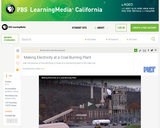
This video from KET traces the energy transformations that occur when coal is burned to produce electricity. Some of the mechanical processes are also described.

In this adapted ZOOM video segment, cast members get hands-on in the recycling process by using old newspapers to make new paper.

In this video segment adapted from ZOOM, cast members make a seismometer and experiment with different ways to make it register movement.
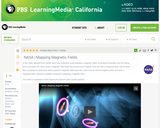
This video adapted from NASA explains how a magnetometer determines magnetic fields around planets.
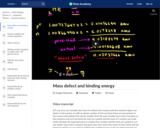
Nuclear binding energy is the energy required to split an atom’s nucleus into protons and neutrons. Mass defect is the difference between the predicted mass and the actual mass of an atom's nucleus. The binding energy of a system can appear as extra mass, which accounts for this difference. Created by Jay.
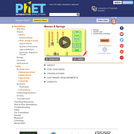
A realistic mass and spring laboratory. Hang masses from springs and adjust the spring stiffness and damping. You can even slow time. Transport the lab to different planets. A chart shows the kinetic, potential, and thermal energy for each spring.
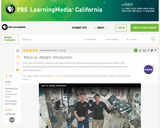
Two astronauts aboard the International Space Station (ISS) describe mass and weight and the differences between the two in this video from NASA’s Teaching From Space initiative.
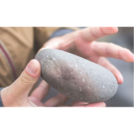
In this lesson the students will go on a scavenger hunt trying to find objects that have definite physical properties such as shape, mass temperature, texture and flexibility.
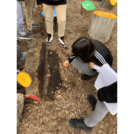
In this lesson the students will observe and record properties of rocks based on properties such as size, weight, shape, color or texture.
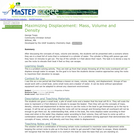
This is an indoor lab that uses a boat simulation to demonstrate the concepts of mass, volume and density, and their relationship to displacement. It is a problem solving activity that encourages student creativity resulting in a variety of valid solutions.

The Maxwell-Boltzmann distribution describes the distribution of speeds among the particles in a sample of gas at a given temperature. The distribution is often represented graphically, with particle speed on the x-axis and relative number of particles on the y-axis. Created by Sal Khan.
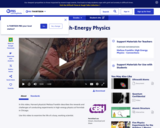
This video segment adapted from Discovering Women profiles Fermilab physicist and Harvard professor Melissa Franklin.
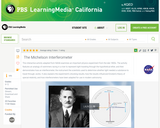
Learn about an important physics experiment that uses an invention that manipulates light in this interactive activity adapted from NASA.

In this video from DragonflyTV, Tiana and Sammy measure, record, and analyze the results of a drop box test to find out how everyday items behave in microgravity.
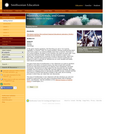
This module introduces students to minerals, crystals, and gems by using pictures and discussions of some of the extraordinary specimens residing in the collections of the Smithsonian Institution. It includes three lessons in which they draw pictures of specimens, grow their own crystals of magnesium sulfate, and perform a scavenger hunt in which they look for minerals in commonly used objects and products.